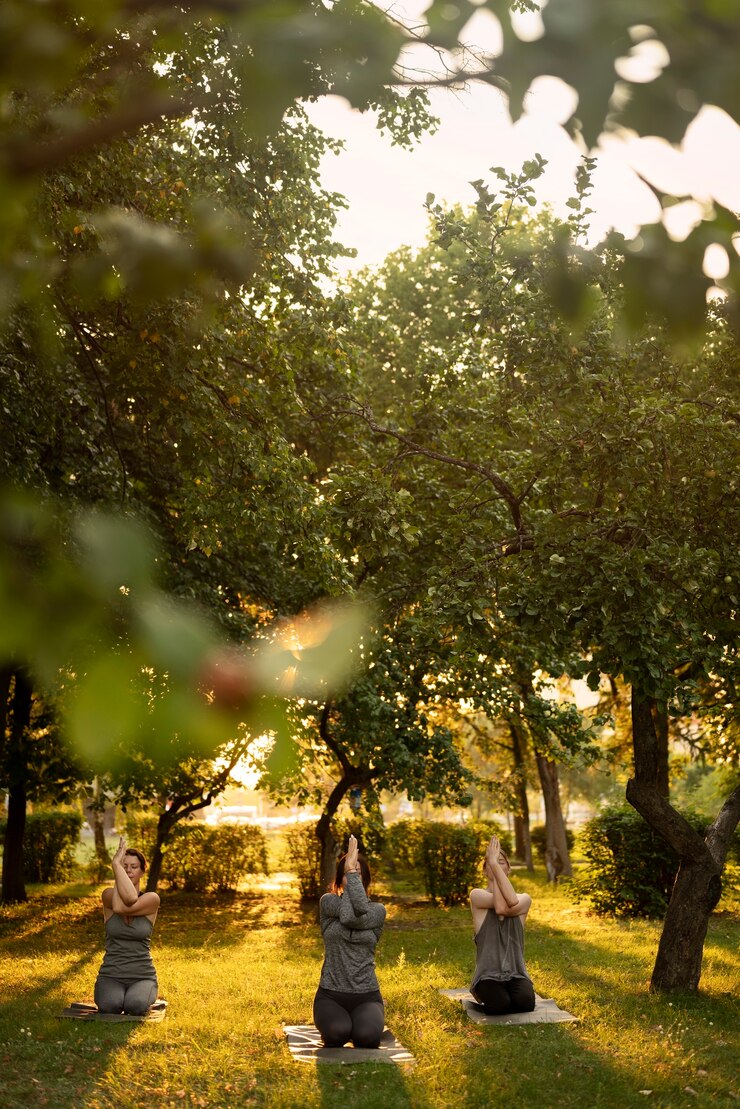Building an eco-friendly wellness retreat center is an exciting and impactful way to provide a peaceful sanctuary for individuals looking to reconnect with nature, relax, and rejuvenate. With the growing demand for sustainable living and eco-conscious travel, constructing a retreat center with a focus on the environment not only supports the health of our planet but also enhances the wellness experience for your guests. In this post, we’ll discuss how to design and construct an eco-friendly wellness retreat center that aligns with the principles of sustainability while creating a serene atmosphere.
1. Choose the Right Location
Selecting an eco-friendly site for your retreat center is the first step in ensuring your project is aligned with sustainability goals. Ideally, your retreat center should be located in an area with minimal environmental impact. Look for land that is rich in natural resources and beauty—forests, mountains, or lakesides—while avoiding areas that require significant excavation or deforestation.
2. Incorporate Sustainable Architecture
When planning the design of your wellness retreat center, embrace sustainable architecture. This means using natural, locally sourced, and eco-friendly materials like bamboo, reclaimed wood, and stone. These materials not only reduce the environmental footprint but also create a more harmonious connection to the surrounding environment.
Opt for energy-efficient designs, such as passive solar heating, natural ventilation, and green roofs. These features reduce energy consumption and promote a healthier environment for guests. The layout of your retreat center should encourage outdoor living spaces, with plenty of windows to bring the beauty of nature indoors.
3. Utilize Renewable Energy Sources
One of the most effective ways to make your retreat center eco-friendly is by integrating renewable energy sources such as solar panels, wind turbines, or geothermal energy. Solar panels can help power your retreat center, reducing reliance on non-renewable energy. Geothermal heating and cooling systems can provide energy-efficient climate control, which is essential for maintaining a comfortable environment year-round.
4. Water Conservation and Management
Water is one of the most precious resources we have, so it’s important to incorporate systems that minimize water waste. Installing low-flow faucets, showers, and toilets will help reduce water consumption. Additionally, consider rainwater harvesting systems to collect and store rainwater for non-potable uses like irrigation and cleaning.
If your retreat center has a large landscape, opt for drought-tolerant plants that require minimal water and are suited to the local climate. Landscaping with native plants also helps preserve local biodiversity and reduce the need for artificial irrigation.
5. Prioritize Sustainable Waste Management
A key component of sustainability is waste management. Establishing composting programs for organic waste, recycling stations, and eco-friendly disposal methods can significantly reduce the amount of waste your retreat center produces. This practice ensures that your wellness retreat remains in harmony with its natural surroundings and minimizes its impact on local landfills.
Additionally, consider offering biodegradable amenities and eco-conscious toiletries to guests, such as bamboo toothbrushes, soap bars, and recycled paper products.
6. Promote Healthy and Sustainable Food
The wellness aspect of your retreat center should extend to the food you serve. Serve organic, locally sourced, and seasonal meals to reduce your carbon footprint. If possible, incorporate food grown on-site by creating an organic garden or greenhouse. This not only provides fresh produce for guests but also strengthens the center’s connection to nature.
Offer vegetarian and plant-based options, as these food choices have a significantly lower environmental impact compared to meat-based diets. You can even host cooking classes or nutrition workshops to educate guests about sustainable food practices and healthy eating.
7. Embrace Natural Landscaping
When designing the outdoor spaces of your wellness retreat center, opt for natural landscaping that blends seamlessly with the environment. Avoid manicured lawns or artificial turf, as these require large amounts of water and chemical fertilizers. Instead, use native plants that are adapted to the local climate and provide habitat for wildlife.
Incorporating outdoor yoga areas, meditation gardens, and walking trails through forests or along water features will help create a peaceful, stress-free environment that promotes healing and connection to nature.
8. Create an Eco-Conscious Guest Experience
Your eco-friendly retreat center should be a place where guests can experience wellness in a way that aligns with sustainability. Encourage guests to participate in eco-friendly practices such as reducing energy use, recycling, and conserving water during their stay. Provide educational materials about sustainability and the environmental initiatives of the retreat center.
Additionally, offer wellness programs that highlight the importance of nature and holistic health practices. This can include outdoor yoga, forest bathing, mindfulness sessions, and eco-conscious wellness workshops.
9. Certifications and Partnerships
To further enhance the eco-friendly credentials of your wellness retreat center, consider obtaining green certifications such as LEED (Leadership in Energy and Environmental Design) or EarthCheck. These certifications demonstrate your commitment to sustainability and can help attract eco-conscious guests who prioritize environmental responsibility in their travel choices.
Partnering with local environmental organizations or other sustainable businesses can also strengthen your commitment to a greener future and create additional value for your guests.
10. Ongoing Sustainability Practices
Building an eco-friendly wellness retreat center is just the beginning. To ensure long-term sustainability, regularly assess and update your practices. This includes monitoring energy and water use, conducting waste audits, and seeking new opportunities for sustainability improvements. By staying informed and committed to reducing your ecological footprint, you can continue to improve your center’s environmental impact while providing a wellness retreat that nurtures both people and the planet.
Conclusion
Constructing an eco-friendly wellness retreat center is a rewarding endeavor that requires careful planning, thoughtful design, and a commitment to sustainability. By incorporating green building practices, renewable energy sources, water conservation systems, and eco-conscious amenities, your retreat center will offer a serene and healing environment for guests while supporting the health of the planet. By making eco-friendliness a priority, you create not only a sanctuary for relaxation but a model for sustainable living that can inspire others.


